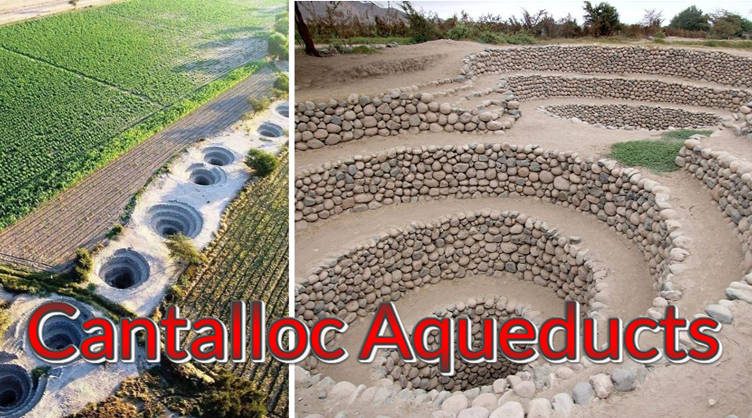In the pre-Columbian era of Peruvian history, the industrious Nazca people crafted a testament to their ingenuity that still echoes through time—the Cantalloc aqueducts. These remarkable water channels, situated in the lowlands of Peru, continue to fulfill their original purpose, acting as vital conduits delivering water to arid regions, a lifeline on which local farmers depend.
Recently, a team of researchers, led by Rosa Lasaponara from the Institute of Environmental Analysis, embarked on a journey of discovery using satellite imagery. Their focus was on unraveling the mysteries of “puquios,” an intriguing series of aqueducts nestled approximately 4 kilometers west of Nazca city in Peru. Crafted by the skilled hands of the Nazca culture, these resilient aqueducts, numbering around 40, stand as enduring witnesses to the passage of time, faithfully serving their purpose throughout the year.
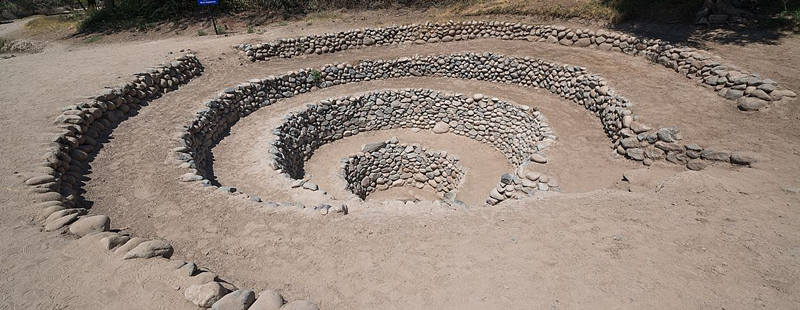
Positioned just 2.5 miles east of the famed Nazca Lines, these aqueducts not only share geographical proximity but also spark speculation about a potential shared theme. There’s a belief that these channels played a symbolic role in the quest for water—a precious resource intended to be harnessed by the Nazca aqueducts. Much like the enigmatic Nazca Lines, these aqueducts are thought to hold both practical significance, making the soil conducive to agriculture, and perhaps a deeper religious meaning.
The revelation of these aqueducts unveils the advanced nature of the Nazca civilization. The spiral wonders, known as “puquios,” form a vital component of a hydraulic system designed for water extraction and guidance. Their distinct spiral openings allow wind to dance into an underground network of canals, compelling water from subterranean aquifers to flow into the areas where it is most needed. Astonishingly, these puquios remain not just relics of the past but active constructions, with 30 of them still actively utilized by farmers today. Join us on a journey to explore the secrets held by the Cantalloc aqueducts, where history, innovation, and the resilience of ancient engineering converge.
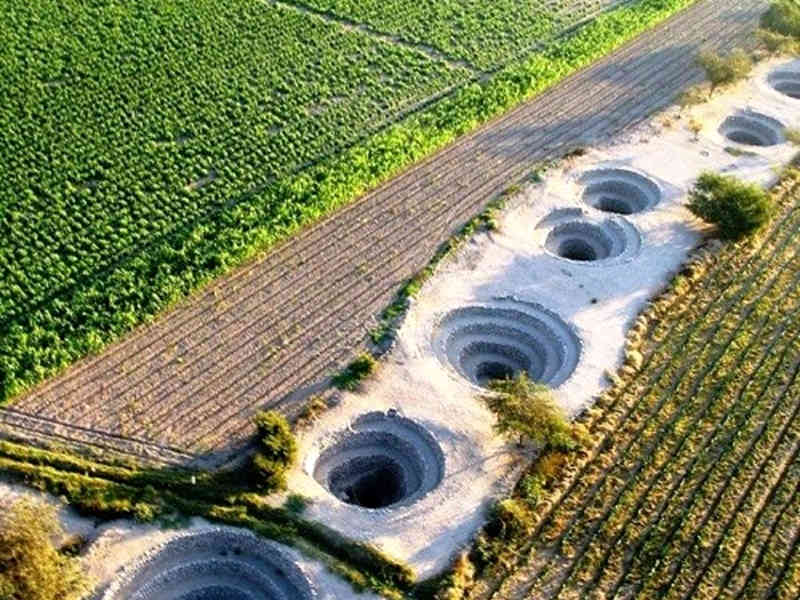
Here are some key points about the Cantalloc Aqueducts:
1. Location and Age:
- Located 4 kilometers away from Nazca.
- A remarkable example of Nazca culture engineering, dating back over 1,500 years.
2. Number and Functionality:
- 46 aqueducts initially found, with 32 still in operation today.
- Used to supply water to Nazca city and agricultural lands cultivating potatoes, beans, corn, and various plant species.
3. Puquios System:
- Comprises a system of 35 aqueducts known as “Puquios.”
- Characterized by a spiral shape and a depth of 12 meters.
- Built using materials such as flagstones and huarango trunks, known for their resistance to water erosion.
4. Other Aqueducts in Nazca Region:
- Bisambra, Achaco, La Gobernadora, Aja, Curve, Orcona, Santo Cristo, El Pino, El Pampon, and Ocongalla are other aqueducts in the Nazca region with different designs and purposes.
5. Construction Materials and Endurance:
- Constructed using flagstone and huarango trunks.
- These materials have withstood the test of time, highlighting the engineering knowledge of the Nazca culture.
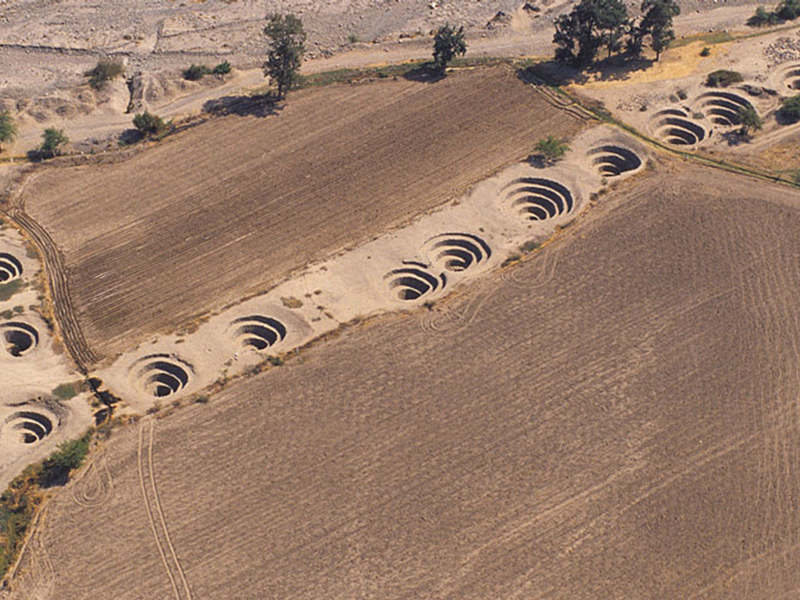
6. Connection to Nazca Lines:
- Believed to be closely related to the sacred animals represented in the Nazca Lines.
- The aqueducts, canals, and wells are part of an advanced network of hydraulic engineering.
7. Puquios Origins and Debate:
- Puquios built by the Nazca culture around 500 AD.
- Used to bring water for irrigation and domestic use to desert settlements.
- Dating disputed, with some arguing for a pre-Hispanic origin and others suggesting a later construction.
8. Hypotheses and Theories:
- Hypothesis linking puquios to Nazca Lines as maps of underground aquifers.
- Debate on whether they were built after a prolonged arid period or before the conquest of the Inca empire.
9. Puquios Layout and Design:
- Located along streams feeding the Rio Grande de Nazca.
- Ventilation shafts in a spiral shape for maintenance.
- Varying dimensions, with some reinforced with wooden beams or cement.
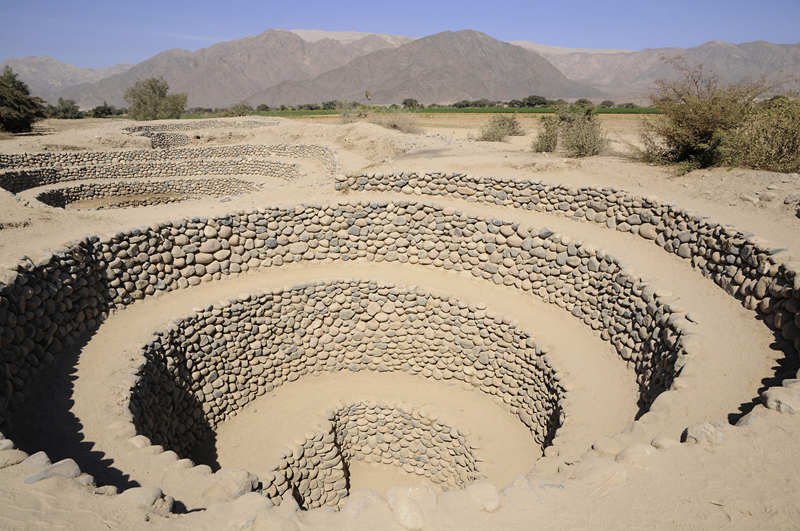
10. Modern Use and Historical Significance:
- Still in use today, supplying water to the region.
- Area once known for viticulture, described as the most fertile and beautiful place on the coast of Peru in the 16th century.
11. Access to Cantalloc Aqueducts:
- Located 2.5 hours away from Huacachina.
- Recommended transportation through Peru Hop for safety, flexibility, and a comprehensive travel experience.
12.Peruvian Desert Attractions:
- Mention of other attractions in the Peruvian desert that shouldn’t be missed.
- Encouragement to experience the best adventures in remote locations in Peru.
Exploring Nazca’s Legacy: From Aqueducts to Enigmatic Lines
The Nazca culture flourished during the pre-Columbian era of Peruvian history, leaving behind a rich heritage that encompasses not only ingeniously designed aqueducts but also enigmatic lines that unveil the mysterious aspects of ancient civilization. These aqueducts, crafted with wisdom by the Nazca people, continue to fulfill their original purpose, serving as crucial infrastructure for local farmers to access water in arid regions.
Recently, a research team led by Rosa Lasaponara delved into satellite images and made a fascinating discovery about the “puquios,” a series of aqueducts located approximately 4 kilometers west of Nazca City. Built by the Nazca culture, these numerous water channels remain in constant use throughout the year, intriguingly positioned in close proximity to the renowned Nazca Lines. This spatial relationship prompts contemplation about potential deeper connections between the two, with speculation suggesting symbolic significance in the quest for water, a resource harnessed by the Nazca aqueducts. Similar to the Nazca Lines, these canals are believed to resonate with religious meaning, beyond their practical role in improving soil suitability for agriculture.
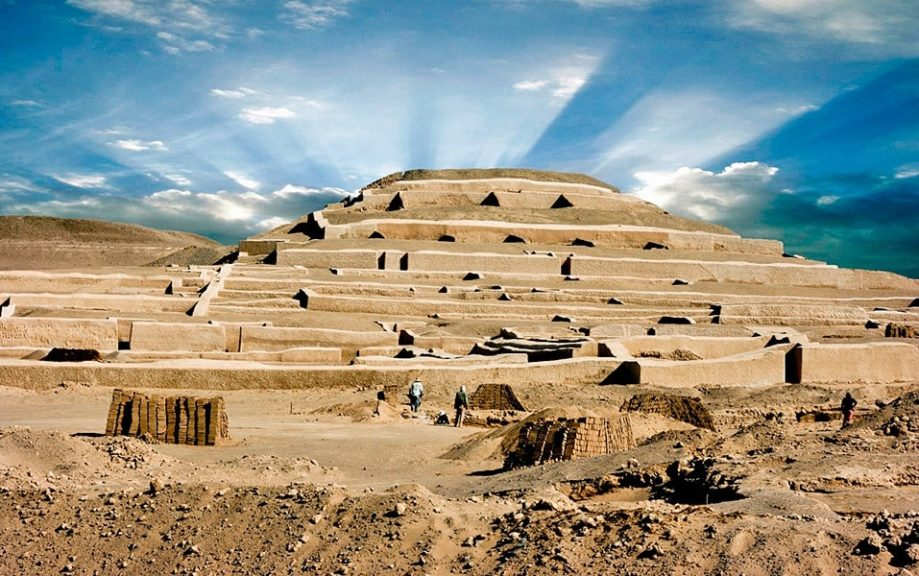
The revelation of these aqueducts underscores the advanced nature of Nazca civilization, particularly the spiral structures known as “puquios,” integral components of a complex hydraulic system for water extraction and guidance. The distinctive openings allow wind to enter an underground canal network, directing water from subterranean aquifers to the areas of utmost necessity. The astonishing fact that 30 of these “puquios” are still in use by farmers today attests to the Nazca people’s exceptional wisdom in managing water resources.
The innovative spirit of Nazca culture extends beyond aqueducts, manifested in the uniqueness of their designs. Therefore, the advanced Nazca water management systems stand as a must-see for those planning to explore the Nazca Lines. While the lines depict a complex and artistic religious life, the Cantalloc aqueducts reveal Nazca’s sagacious decision-making in meeting these needs within the desert. In this exploration of an ancient civilization, we find ourselves traversing a tunnel through time, reflecting on the brilliance of human intellect and engineering marvels across different historical periods. This mysterious land serves not only as a witness to past civilizations but also as a wellspring for modern exploration.
END:
In conclusion, the Cantalloc Aqueducts stand as a testament to the ingenuity and advanced engineering skills of the ancient Nazca culture. As we marvel at the intricate spiral structures and the well-thought-out hydraulic system of the puquios, it prompts us to consider the future of Cantalloc Aqueducts in terms of both preservation and ongoing research.
Preserving these aqueducts is crucial not only for their historical significance but also for the valuable insights they provide into the Nazca people’s mastery of water management in a challenging desert environment. As we continue to explore and uncover the mysteries of the Nazca culture, the Cantalloc Aqueducts remain a focal point for researchers, archaeologists, and historians. Future research endeavors could delve deeper into understanding the precise dating of the aqueducts, shedding light on the timeline of their construction and the technological evolution of the Nazca civilization. Additionally, advancements in technology may allow for non-invasive methods to study the aqueducts, providing more detailed insights without compromising their integrity.
Furthermore, considering the delicate balance between tourism and preservation, sustainable strategies for managing visitor impact on the Cantalloc Aqueducts should be a priority. Implementing responsible tourism practices will ensure that future generations can continue to appreciate and learn from these remarkable feats of ancient engineering. In essence, the Cantalloc Aqueducts not only offer a window into the past but also present an exciting opportunity for future discoveries and a deeper understanding of the Nazca culture’s lasting legacy. As we look ahead, a collaborative effort in research, conservation, and responsible tourism will play a pivotal role in safeguarding and unraveling the untold stories embedded within the Cantalloc Aqueducts for generations to come.
More UFOs and mysterious files, please check out our YouTube channel: MysFiles
Nazca Lines: The strongest evidence that aliens have visited the earth
